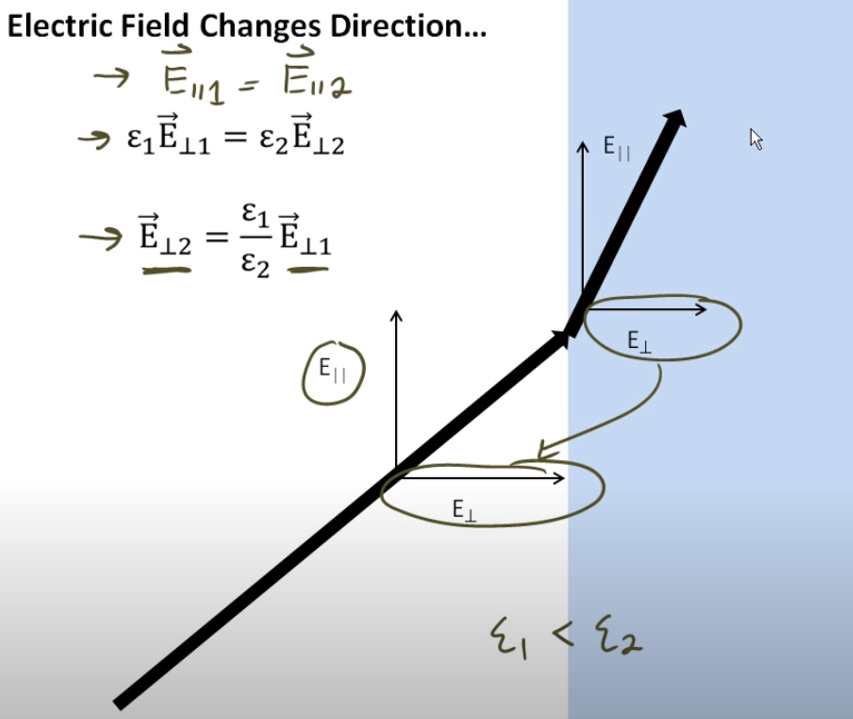So, for E field boundary condition, we know the vertical part of the incident field
$\varepsilon _{1}E_{1\perp } = \varepsilon _{2}E_{2\perp }$
and the tangential parts are same from both side.
That basically means a larger $\varepsilon$ leads to a smaller vertical part. put that into a figure as following
 As shown in this figure, the incident angle is smaller than transmitted angle.
And this is directly opposite to Snells law, where
$\beta {_{1}}sin(\Theta _{1}) = \beta {_{2}}sin(\Theta _{2})\\
\sqrt{\varepsilon _{1}}sin(\Theta _{1}) = \sqrt{\varepsilon _{2}}sin(\Theta _{2})$,
As shown in this figure, the incident angle is smaller than transmitted angle.
And this is directly opposite to Snells law, where
$\beta {_{1}}sin(\Theta _{1}) = \beta {_{2}}sin(\Theta _{2})\\
\sqrt{\varepsilon _{1}}sin(\Theta _{1}) = \sqrt{\varepsilon _{2}}sin(\Theta _{2})$,
however, $sin(\Theta_{1})$ or $sin(\Theta_{2})$ leads to the parallel part of the field.
For example, say the a wave traveling from Air to Water. Since water has a higher $\varepsilon$, therefore the $\Theta_{water}$ is larger than $\Theta_{air}$ as shown on image above. But the Snell`s law shows the opposite.
I kind of know Snell`s Law is coming from the Electric field boundary condition, but I cannot get it through, where I got it wrong?
